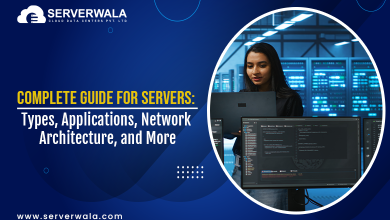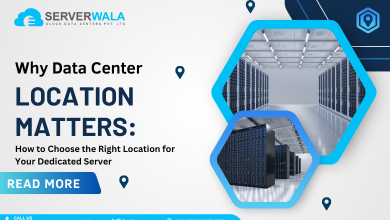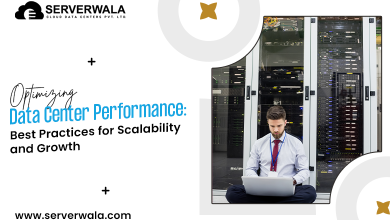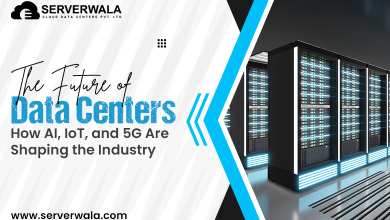Technological Advancements in Data Centre Storage
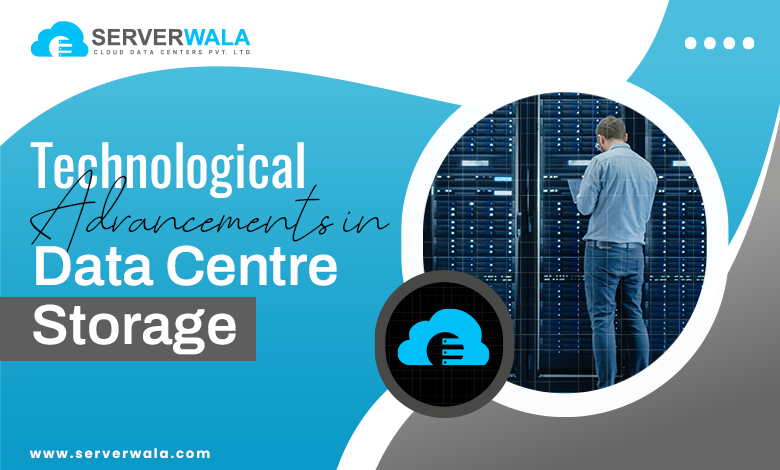
Overview
Data center storage is a foundational pillar supporting the exponential growth of data in today’s digital world. The evolving volume, diversity, & velocity of data demand faster, more reliable, and cost-effective storage options. This blog explores the latest advancements in data center storage technologies, highlighting trends such as artificial intelligence (AI), edge computing, and the shift towards cloud solutions. We’ll dive into how these innovations are revolutionizing data storage and what it means for businesses striving to stay ahead in a data-driven economy. From improving operational efficiency to enhancing scalability, the evolution of data storage is opening new doors for businesses to tap the comprehensive potential of their data.
An overview of data centre storage technologies
Data center storage technologies have undergone significant transformations in recent years. These innovations are led by the progressive demand for higher storage capacities, faster access speeds, and greater dependability. Businesses now require more effective ways to keep, administer, and access their advancing volumes of data. Let’s explore the key advancements that have reshaped data center storage.
- Hard Disk Drives (HDDs) to Solid-State Drives (SSDs)
Traditionally, data centers relied on hard disk drives (HDDs) for storage. While HDDs offered a cost-effective solution, their mechanical components limited performance, particularly in speed and reliability. In past years, solid-state drives (SSDs) have taken over as the preferred storage medium.- Speed: SSDs provide significantly faster data access speeds than HDDs, with read and write speeds up to 500-550 MB/s compared to 100-150 MB/s for HDDs.
- Reliability: SSDs are more durable due to the absence of moving parts, resulting in fewer failures and longer lifespans.
- Energy Efficiency: SSDs consume less power than HDDs, making them more energy-efficient, which is crucial in large-scale data centers.
- Storage Area Networks (SANs)
Storage area networks (SANs) have become essential in large data centers, enabling businesses to manage storage more efficiently.- Centralized Management: SANs permit centralized storage adminstration, making it easier to allocate and optimize resources.
- Scalability: As business data needs grow, SANs can be expanded to meet these demands by connecting additional storage devices.
- Performance: SANs use high-speed networks to ensure fast access to data, even in environments with high transaction volumes, such as databases or virtualized systems.
- According to a 2019 report by Grand View Research, the global SAN market size was valued at $21.2 billion and is projected to grow at a compound annual growth rate (CAGR) of 7.7% from 2020 to 2027.
- Network-Attached Storage (NAS)
Network-attached storage (NAS) solutions have also gained popularity, especially for businesses seeking easier data sharing and storage across multiple devices.- Ease of Access: NAS provides shared access to data across a network, allowing businesses to centralize storage and improve collaboration.
- Cost-Effectiveness: Compared to SANs, NAS is often a more viable choice for varied businesses.
- Scalability: NAS devices can be expanded with additional storage drives, enabling businesses to increase storage as needed without significant infrastructure changes.
- Cloud Storage
In recent years, cloud-based storage solutions have taken the lead, offering unmatched flexibility and scalability. Businesses are increasingly moving their storage workloads to the cloud, capitalizing on its benefits.- Flexibility: Cloud storage allows businesses to scale up or down based on their storage needs without the need for physical infrastructure.
- Cost-Effectiveness: With cloud storage, companies only give money for what they actually employ, discarding the requirement for large upfront capital investment in hardware.
- Remote Access: Cloud storage permits employees to access data from wherever they are, encouraging remote operation as well as collaboration.
- Market Growth: The global cloud storage market is expected to reach $101.2 billion by 2027, growing at a CAGR of 21.5% from 2020 to 2027, as per Grand View Research.
- Hybrid and Multi-Cloud Storage Solutions
Many businesses are taking up hybrid & multi-cloud approaches to balance the benefits of on-premise storage and the flexibility of cloud storage.- Hybrid Cloud: A hybrid cloud environment integrates both private and public clouds, allowing businesses to keep confidential data on private web servers while employing public clouds for less significant data.
- Multi-Cloud: Multi-cloud storage allows businesses to employ several cloud providers to skip vendor lock-in and optimize functioning & pricing.
- These approaches provide greater flexibility, risk mitigation, and increased control over data storage strategies.
Data center storage technologies are increasingly evolving to meet the growing demand for faster, more reliable, and scalable storage solutions.
Also Read: What are Edge Data Centers? (Complete Guide)
How is the technology for data centre storage developing?
As data center storage technologies continue to evolve, the focus is shifting toward enhanced speed, capacity, and automation. These progressions are being driven by the necessity to handle larger volumes of data while ensuring effectiveness and dependability. From cutting-edge protocols like NVMe to the integration of AI and edge computing, the storage landscape is transforming to meet the demands of modern businesses. Let’s explore some of the most important technological developments that are shaping the future of data center storage.
- Non-Volatile Memory Express (NVMe) Storage
One of the most significant advancements in data center storage is the rise of Non-Volatile Memory Express (NVMe) technology. NVMe is a protocol that allows quicker data transfer rates relative to traditional storage solutions like hard disk drives (HDDs) and even solid-state drives (SSDs).- Speed: NVMe can transfer data at speeds of up to 3.5 GB/s, significantly faster than the 550 MB/s speed of SATA SSDs. This high-speed performance is essential in environments where real-time data access is critical.
- Low Latency: NVMe reduces latency by utilizing parallel processing and minimizing I/O bottlenecks, making it ideal for applications with high demands for throughput.
- Market Growth: According to a 2023 report by Grand View Research, the global NVMe market is expected to grow at a compound annual growth rate (CAGR) of 30.6% from 2023 to 2030, demonstrating the increasing demand for faster data transfer capabilities in data centers.
- Artificial Intelligence (AI) and Machine Learning (ML) in Storage Systems
AI & ML are playing a pivotal role in the development of data center storage technologies. These advanced technologies are being integrated into storage systems to automate and optimize data management.- Predictive Analytics: AI and ML algorithms can foresee storage workloads, helping to optimize data placement and access patterns. This ensures that data is stored in the most efficient way possible, reducing unnecessary read/write cycles and improving system performance.
- Smart Data Retrieval: AI-driven systems enhance data retrieval processes by learning from past access patterns and intelligently caching frequently used data. This renders quicker data accessibility & lessens strain on storage resources.
- Improved Efficiency: AI can dynamically allocate storage resources, ensuring that data is distributed across the data center in a way that maximizes storage capacity while maintaining performance levels. This reduces operational costs by minimizing wasted resources.
- Industry Adoption: According to a 2022 survey by Deloitte, 80% of data centers are adopting AI-driven technologies to improve operational efficiency and storage management. This trend is predicted to continue, with AI coming out as a critical component of next-generation storage systems.
- Edge Computing and Distributed Data Storage
The rise of edge computing is another major development in data center storage. With the exponential growth of IoT devices and data generated at the edge of networks, data centers are under increasing pressure to store and process this data nearer to its source.- Edge Storage: Traditional data centers often struggle with storing data from edge devices due to latency and bandwidth issues. Edge storage solutions address this by bringing data storage closer to the source, enabling faster processing and reducing the need for data to travel long distances to centralized data centers.
- Bandwidth Efficiency: Storing and processing data at the edge reduces the strain on centralized data centers, saving bandwidth and ensuring that only essential data is transmitted back to the cloud or primary data center. This is specifically vital as data volumes continue to evolve.
- Global Adoption: According to Statista, the edge computing market is expected to reach $20.4 billion by 2026, with a CAGR of 37.8%. This rapid growth highlights the increasing demand for solutions that bring data storage and processing closer to the edge of the network.
- Distributed Data Systems
To complement edge computing, distributed data systems are becoming more prevalent in modern data centers. These systems distribute data across multiple locations.- Scalability: Distributed storage systems can scale more easily by adding additional nodes to the network, ensuring that storage capacity grows alongside data demand without the need for a complete infrastructure overhaul.
- Fault Tolerance: These systems are designed to be fault-tolerant, with data being replicated across multiple locations. If one node stops operating, the system can continue operating without any loss of data or downtime.
- Flexibility: Distributed data storage solutions are often integrated with cloud and on-premises systems, providing businesses with flexible storage options that can be tailored to their specific needs.
- Quantum Storage and Persistent Memory
Looking further into the future, quantum storage and persistent memory technologies hold the potential to revolutionize data center storage.- Quantum Storage: Quantum computing is expected to offer breakthroughs in data storage and processing. Quantum storage could enable data centers to handle far more complex data sets and perform tasks at unprecedented speeds.
- Persistent Memory: Persistent memory, which integrates the speed of DRAM & the non-volatility of flash storage, promises to bridge the gap between memory and storage. This technology allows data to be accessed more quickly while providing the durability required for modern data centers.
The evolution of data center storage is accelerating, with innovations in NVMe, AI, edge computing, and distributed data systems leading the way. These technologies are not only improving speed, capacity, and efficiency but also addressing the unique challenges posed by the increasing volumes of data generated across industries. As data continues to grow and become more complex, the development of these storage technologies will be essential in keeping up with the demands of businesses and ensuring seamless data management and access.
Also Read: How to achieve high availability with data center redundancy?
Final Recap
With storage solutions like solid-state drives (SSDs) replacing traditional hard disk drives (HDDs), and the rise of cloud and edge computing, the storage landscape is becoming increasingly versatile and powerful. AI-driven storage systems are helping to automate tasks, optimize data retrieval, and predict storage needs, ensuring higher operational efficiency. These advancements not only streamline the way businesses store and access data but also significantly reduce costs by enabling smarter, more scalable storage strategies. The continued evolution of data center storage ensures data security, enhanced accessibility, and improved reliability, paving the way for more dynamic and competitive business operations. Looking forward, innovations such as quantum storage and persistent memory technologies promise even greater improvements, making the future of data storage both exciting and transformative.

